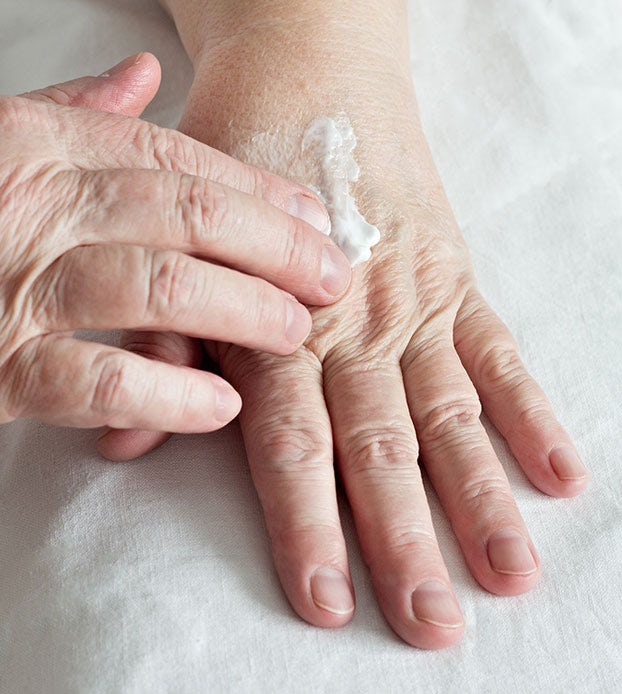There are a lot of ways to consume cannabis on the market. One option that’s lesser-known but worthy of more attention is the THC transdermal patch.
What is THC?
THC is a psychoactive, intoxicating cannabinoid that is abundant in the cannabis plant. The health benefits of THC are well-documented, and two of its best-known benefits are the ability to reduce inflammation and relieve pain.
What are transdermal patches?
Transdermal patches are small, self-adhesive patches that slowly release a dose of the active ingredient/s into the skin over an extended period of time. In the case of cannabis products specifically, these patches deliver cannabinoids to both local receptors in the skin and systemically to the bloodstream, interacting with the endocannabinoid system and producing numerous effects.
Cannabis patches are discreet, long-lasting, and easy to use, making them a great alternative to smoking or orally consuming cannabis. Patches can be helpful for patients who cannot tolerate oral products or are unable to achieve the effects desired from sublingual, oral, or inhalation.
Transdermal cannabis patches work much the same as birth control or nicotine patches and can be made with any cannabinoid, including THC, CBD, CBG, or CBN. Patches also commonly contain other ingredients, such as terpenes, to enhance effects locally and potentially improve the delivery of cannabinoids through the skin.
Potential benefits of THC patches
It’s important to note that while transdermal delivery of medication is well established, there is very limited scientific research on the efficacy of transdermal delivery for cannabinoids.
Generally speaking, THC patches can deliver longer-lasting effects than other delivery methods, usually lasting between 6-12 hours and generally carry minimal risk adverse effects due to the slow and steady delivery.
You may benefit from THC patches if:
- You need long-lasting pain relief. THC has been proven effective for relieving pain and patches can provide both local and systemic relief for pain. They work well for relieving stiffness, soreness, or muscle aches.
- You have spasticity from multiple sclerosis or cerebral palsy. Cannabis in many forms has been shown to reduce spasticity and provide pain relief for patients with MS.
- You’re suffering from nausea/vomiting. THC has well established anti-nausea effects, and since patches are not consumed orally, they can be very useful when you’re unable to keep food down.
- You’re unable to swallow. Transdermal delivery of cannabis through a patch bypasses the need to swallow oil or pills.
- Edibles don’t work for you or are not an option.
How do THC transdermal patches work?
Transdermal patches are designed to be absorbed through the skin and into the bloodstream for a steady, continuous release of cannabinoids into the body. Cannabinoids are fat-soluble molecules, rather than water-soluble, so they can pass through your first layer of skin, which is the most challenging barrier to transdermal delivery.
However, it can be challenging for cannabinoids to move through the other layers of skin without assistance. Many transdermal patches also contain permeation enhancers, ingredients in the patch that help the cannabinoids transfer through the skin and into the blood. The permeation enhancer helps the molecules penetrate through the layers of the skin.
By allowing the cannabinoids to move directly into the bloodstream, patches bypass the liver and other major sites of metabolisms, making the cannabis products more bioavailable than other methods of consumption. This means less variability in response, as some people quickly metabolize THC into 11-hydroxy THC, while it takes other people longer. Transdermal patches take this variable out of the equation.
How to use a transdermal patch
Stick the THC patch on your skin in an area with good circulation. If there is an area that is painful, apply the patch as closely as possible while avoiding areas with broken skin or wounds. You can place a patch on:
- The back of your neck
- Inner wrist or bicep
- Shoulder
- Lower back
- Behind your knee
- Inner ankle
- Top of your foot
Avoid hairy areas because hair follicles may interfere with absorption and the adhesive part of the patch could cause discomfort when removed. Once placed, leave the patch for up to 12 hours (depending upon the instructions) to experience the effects. When placing the next patch, switch the placement site to the other side of the body at the same site, or another site anywhere on the body.
To remove the patch, pull gently from one corner or and away from the body. If the patch is stuck and pulling hair, you can try some mineral oil, cooking oil, or some soap and water to help remove it. Try an alternative patch site if irritation occurs. Any significant irritation is likely caused by an intolerance to something in the product (cannabinoids, terpenes, adhesive, etc) and you can consider trying an alternative brand or product.
Topical vs transdermal
Topical and transdermal aren’t the same delivery method, nor do they necessarily produce the same effects.
Topical products deliver cannabinoids and provide relief to localized areas on the skin. These products are made to be applied locally to the problem area for short term relief. Most don’t contain the permeation enhancers or employ technology that that transdermal products do, so topicals are not even designed to move the cannabinoids through the layers of skin and into the bloodstream like patches.
Will THC patches get you high?
Maybe. Depending on the size of the patch, THC patches can deliver a significant dose, which is being absorbed directly into your bloodstream. While this dose is being absorbed slowly over a period of several hours, it can still be enough to induce “high” feelings according to anecdotal reports.
However, it’s not the same as taking a big bong hit and you’re likely to remain more lucid and functional throughout the day. (Yes, patches can give you the munchies too.)
But how high you feel also depends on a variety of personal factors, including:
- your endocannabinoid system
- cannabis tolerance
- skin thickness
- body hair
- body fat
- sex
How to choose a good quality THC patch
While there isn’t much research out there on THC transdermal patches, you can vet product options in much the same way as you would for any cannabis product. Look for products that provide information on the package about how the patch is formulated and manufactured. You can also search for a certificate of analysis, the lab results that certify ingredients.
The most important thing to watch out for when using THC patches is a skin reaction. If your skin becomes irritated or starts to react to the patch, try a different area of your body or a product with a different formulation.
Sign up for bi-weekly updates, packed full of cannabis education, recipes, and tips. Your inbox will love it.

 Shop
Shop Support
Support
















